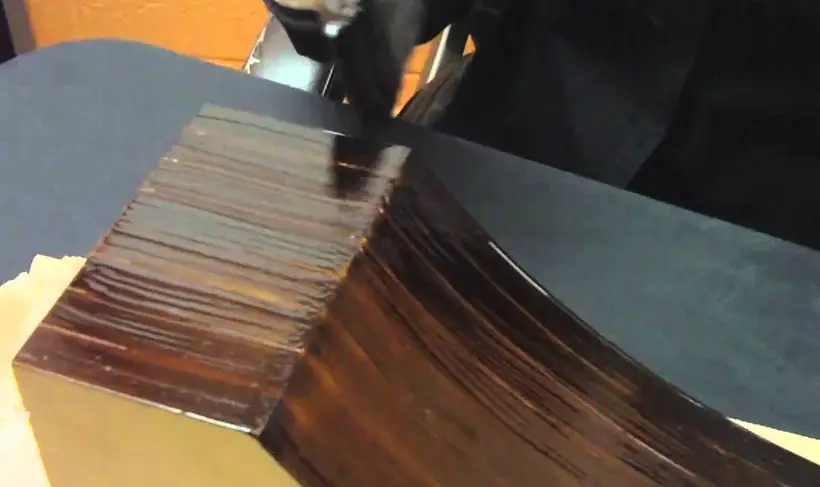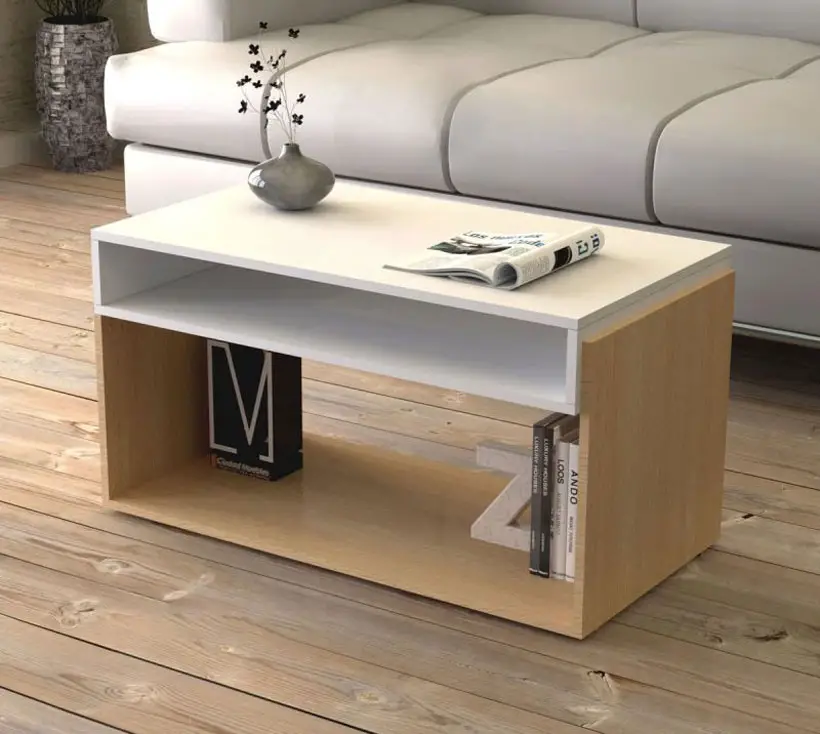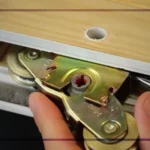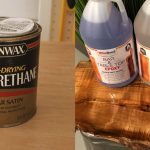Can You Stain MDF Board? What Is The Best Stain?
MDF board, or medium-density fiberboard, is a manufactured wood product comprising wood fibers, wax, and resins. It is a low-cost and sturdy alternative to wood. Now, with wood staining being a popular practice, can you stain MDF board too?
The simple answer is yes. You can stain the MDF board even if it does not have a wood grain like natural wood. This is because MDF is very porous. Therefore, it can quickly absorb wood stains. The secret to fixing the quick absorption is choosing the right stain color and sticking to the proper application technique.
So then, should you paint or stain the MDF board? Read on to find out this and much more.
Can You Stain MDF Board? If Yes, How to Do So?
Yes. You can stain MDF board or medium-density fiberboard with almost any color. However, it is only possible if you follow the correct techniques. This is because, unlike real wood, MDF boards lack wood grain and are very porous.
Therefore, if incorrectly applied, it can easily soak up so much stain, and you won’t like the end results. But don’t worry.
Below are steps on how to correctly stain MDF boards. You can also watch this video: for a more detailed explanation.
Step 1: Gather Your Tools and Materials
Before starting with the stain application, gather the right tools and supplies for the job. These include:
- Small and medium paintbrushes
- Paint or wood stripper
- Sandpapers with different grits
- Stain and sealant
- Scraper
- Power sander with vacuum attachment
- Rags and lint-free cloths
- Drop cloth, goggles, and hand gloves
Step 2: Prepare the Workspace
If you will be working indoors, place a drop cloth on the floor to protect the flooring.
Also, open all the doors and windows to ensure proper ventilation because the fumes from the stain can be toxic if inhaled.
However, you are better off working outdoors. To prepare the outdoor space, clear out the area, ensuring it is clean. Then, get a workbench or a saw horse and cover it with a drop cloth before placing your board there.
Step 3: Get Rid of Any Existing Finish
Put on your goggles, protective face mask, and gloves. Then, apply your wood or paint stripper on the MDF board to remove existing stains or paint layers. This is because your board will have a blotchy appearance if you apply stain over the existing finish.
After applying the stripper, let it sit on the board for a while, as indicated on the product label. Next, get a plastic paint scraper and gently remove the old finish. Then, let the surface dry.
Step 4: Apply a Filler
If your MDF board has any perforations, holes, or cracks, use a wood filler to patch them. You could also use wood putty for a smooth surface.

Step 5: Sand the MDF Board
Get 100 or 120-grit sandpaper and gently sand the MDF board. Next, use 150-grit sandpaper to achieve a smoother finish. And for the perfect textured finish, complete the sanding process with 180 or 220-grit sandpaper.
Alternatively, you could use an electric power sander if staining large MDF boards like a door. It will help you complete the sanding job faster. After that, clean any dust on the surface with a damp rag or vacuum.
Step 6: Time To Stain the Board
Before applying the stain, you can apply a pre-stain which acts like a primer, ensuring the stain is absorbed evenly.
Since the MDF board is not very receptive to stains as natural wood, get an oil-based wood stain. Then, apply a thin and even layer of paint on the surface using a brush or rag. For the best results, brush the stain with long strokes.
You must apply 2 to 3 layers of stain, allowing each adequate time to dry before adding the next. Typically, it would take 4 to 6 hours for each coat to dry. As for the edges, use a smaller brush to apply the stain.
Step 7: Apply the Sealant
Give the board enough time to dry between 24 and 36 hours. Then, apply your preferred sealant over the stained MDF board surface. You can use oil-based MDF stain varnish or polyurethane coating for a beautiful gloss finish.
Generally, 1 to 2 coats of sealants should be adequate to seal the stain and protect the board from dents, spills, and scratches. After the application, let the varnish dry before using or handling the MDF board. This could take up to 3 days.
Which Staining Method Is the Most Efficient: Brush, Cloth, or Aerosolized Wood Stain?

Now that you know how to stain MDF to look like wood, various methods exist for applying the stain. And each of them has some advantages and disadvantages. These include:
Using a Brush
Using a paint or foam brush is the most common stain application method. However, this method is best suited for small projects and edges of the board.
For large projects, a spray can is the best. Alternatively, you could use a wide brush with a long handle. A brush’s only drawback is that it’s reasonably easy to over-apply the stain if you are not careful.
Cloth Method
Additionally, you can use a lint-free cloth to apply stain on the MDF board. This method offers perfect coverage compared to using a brush and allows you to add patterns to the board. However, using cloth takes longer to complete the job.
Use of Aerosolized Wood Stain
Another effective and more convenient method of staining MDF board is using aerosolized wood stain. It works the same way as spray painting. You just apply the stain by spraying it on the MDF board surface in an even, sweeping motion.
Should You Paint or Stain MDF Board?
Although both options are great depending on the look you want to get, staining is the overall best option. This is because compared to paint, stains easily soak in the MDF board much better.

That said, if you want to give your MDF a darker and more natural finish, staining is the best solution. However, for a more vibrant finish, you should definitely paint your MDF board. But unlike staining, you must prime the board before applying the paint.
For staining the MDF, you can use oil-based or gel stains. And if painting, you can use acrylic or oil-based paint.
Tips For Staining MDF Board

Staining MDF boards can be challenging because of their unique composition. So, here are additional tips to help you achieve more professional-like results.
- Before applying the stain, test it on a scrap MDF board first. This way, you won’t be disappointed with the final result.
- Be sure to wipe off any excess stains using a clean cloth to prevent blotching and uneven drying. You only need to wait for a few minutes after the application.
- You must apply a topcoat or sealant to protect the stained board and enhance its durability.
- If the edges of the MDF board are exposed, you can apply a thin layer of primer and paint. This is because stain alone cannot offer the same protection as paint.
- Make sure to choose the correct applicator because the application method you use can significantly affect the final results.
- If you are worried about a splotchy finish, you can apply a wash coat or wood conditioner on the board before staining. This is to help the MDF absorb the stain evenly.
- Don’t use a metal scraper to remove the old finish on your MDF board. It can scratch the delicate surfaces of the board.
FAQs
Check out these frequently asked questions about how to stain MDF board like a pro.
Can MDF boards be stained to look like any wood type?
Yes. The trick is to use gel or oil-based wood stains and choose a stain color that complements the type of wood you want. However, you should not expect the final finish to look as high-end as natural wood.
Can I use a water-based stain on the MDF board?
No. You can only use oil-based stains. This is because MDF surfaces are sensitive to moisture. Therefore, using water-based dyes could make the MDF board swell.
Does staining MDF board make it waterproof?
No. Stains only help enhance the appearance of MDF boards. Therefore, the board will still be susceptible to moisture absorption if exposed to water for longer. However, you can make the MDF waterproof by painting it.
Bottom Line
While the MDF board lacks grain like natural wood, it has a porous surface. Therefore, you can stain the board, and it will absorb the stain, enhancing its appearance.
However, you must follow the correct application technique and use the right wood stain to avoid poor results. Moreso, you must carefully choose which staining method to use.
Now, if you are torn between painting or staining your MDF board, you should know that staining is the best. This is because MDF does not absorb paint. But if you want to give your MDF a vibrant finish, you should paint the board.




